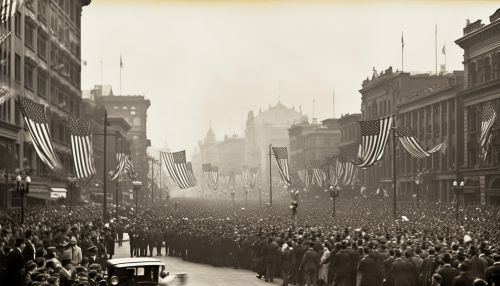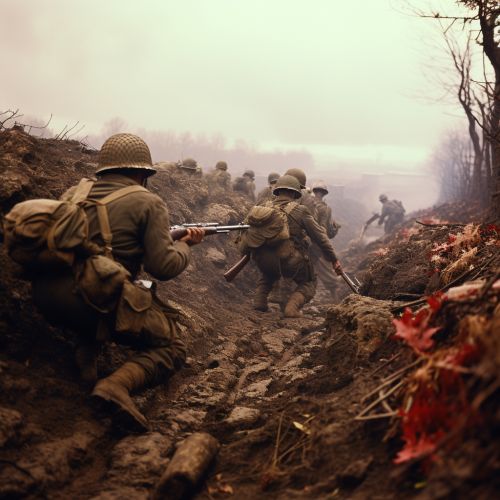World War II
Prelude to World War II


The interwar years of the 1920s and 1930s were marked by political and economic instability in Europe. The Treaty of Versailles, which ended World War I, was viewed by many in Germany as a harsh and punitive peace, leading to resentment and a desire for revenge. This, combined with the economic turmoil of the Great Depression, created fertile ground for the rise of extremist ideologies, notably fascism in Italy and National Socialism in Germany.
Rise of Fascism and National Socialism


In Italy, Benito Mussolini and his Fascist Party came to power in 1922, promising stability and order after years of political chaos. In Germany, Adolf Hitler and the National Socialist German Workers' Party (Nazi Party) seized power in 1933, exploiting public discontent with the Treaty of Versailles and the economic hardships of the Great Depression. Both regimes pursued aggressive foreign policies in the 1930s, with Italy invading Ethiopia in 1935 and Germany annexing Austria and the Sudetenland in 1938.
Outbreak of World War II


World War II officially began on September 1, 1939, when Germany invaded Poland, a move that Britain and France had pledged to oppose. Despite this, the Phoney War period followed, during which there was little actual fighting. This changed in April 1940, when Germany launched its Blitzkrieg ('lightning war') strategy, rapidly conquering Denmark, Norway, the Netherlands, Belgium, and France.
Major Theatres of War


World War II was fought in many different theatres, or geographic areas. The European Theatre was the main theatre of war, but significant fighting also took place in the Pacific, North Africa, and the Middle East. The war also extended into the Atlantic Ocean, where German U-boats waged a deadly campaign against Allied shipping.
End of World War II


World War II ended in Europe on May 8, 1945, when Germany unconditionally surrendered to the Allies. In the Pacific, the war continued until Japan surrendered on August 15, 1945, following the dropping of atomic bombs on the cities of Hiroshima and Nagasaki by the United States.
Aftermath of World War II


The aftermath of World War II saw a significant shift in global power, with the United States and the Soviet Union emerging as superpowers. The Cold War began, a period of geopolitical tension between these two blocs that lasted until the early 1990s. The United Nations was also established in an attempt to prevent future global conflicts.
